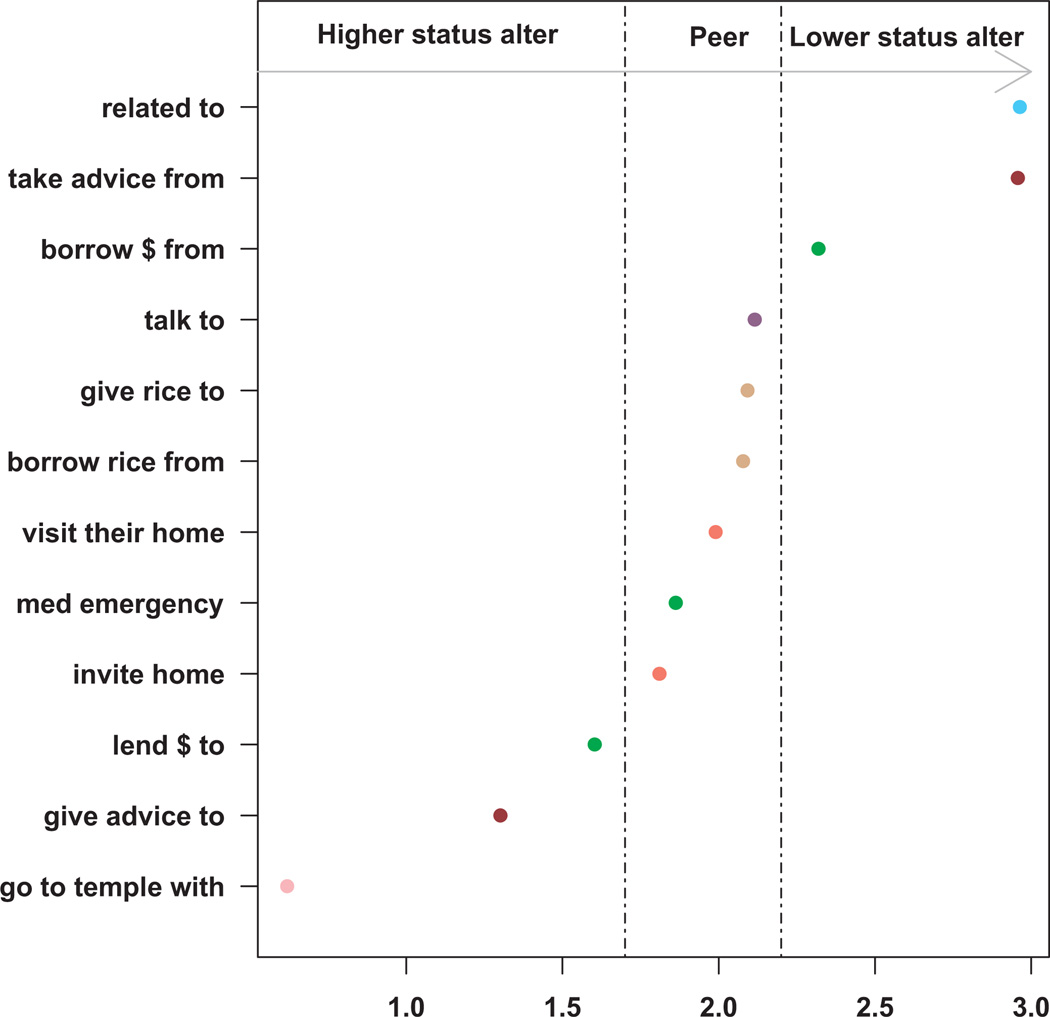Fig. 4.
This figure shows the mean difference between alters and egos in-degree measure for each name generator. Across all 12 name generators, egos nominated alters with higher in-degree scores than themselves, as predicted by the “friendship paradox” (Feld, 1991). Name generators with the lowest differences between egos and alters can be categorized as low status questions, those around the median can be categorized as peer questions, and those at the upper end as high status questions. Fig. SA 3 plots these differences against select demographic trait differences.

